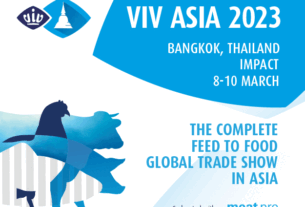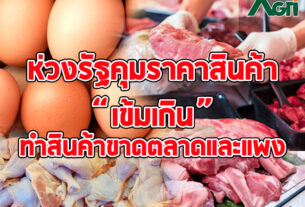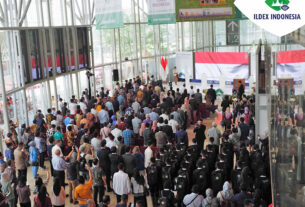Andreas Pelzer, Haus Düsse Agricultural Research and Training Centre, Chamber of Agriculture of North Rhine-Westphalia
The requirements for future-orientated milk production and cattle farming in Germany continue to increase. In addition to the difficult global conditions, the challenge remains of organising dairy farming in the future in such a way that sustainability, with all its aspects and conflicting objectives, increasingly becomes the focus of all those involved along the value chain.

Safeguarding the economy and meeting the political and social demands for new animal welfare standards is a balancing act that can only succeed if all those involved in this value chain, including politicians, are aware of their responsibility and ensure it in the long term. In the context of social aspects, not only the working and living conditions in agriculture, but also political and social concerns must be taken into account.
Resolve conflicting goals
It is difficult to fulfil all these requirements at the same time, as this creates conflicting objectives that need to be resolved. Classic conflicts of objectives appear to arise when there is a demand for greater animal welfare in conjunction with a consistent reduction in negative environmental impacts. However, a closer look reveals that there are often also positive effects which, with intelligent measures to reduce emissions, also have positive effects on animal welfare. This means that when freshly deposited manure is picked up directly by collecting robots, emissions can be reduced through rapid cleaning, while the cleanliness of the walking surfaces and hoof health are maintained at the same time.
Build smart
In the current political and social situation, it is not easy to develop dairy cattle farming with adapted barn and farming concepts that are fit for the future on the market and to obtain licences for the construction of dairy cattle barns. Professional solutions are also urgently needed. Smart building is a path that is becoming increasingly clear, as the interplay of intelligent barn construction concepts in conjunction with innovative technologies, particularly in the areas of automation and digitalisation, supports sustainable, animal-friendly farming conditions and an optimised environmental impact. In addition, both have the potential to reduce the workload of dairy farmers and their employees and improve working conditions.
Take consumer interests seriously
Pasture, grassland utilisation and the discussion about mother or cow-based calf rearing are current topics of discussion between consumers and farmers. It is particularly important for farmers to take these issues and aspects seriously in order to generate transparent, comprehensible solutions for these requirements and, if possible, to incorporate them transparently into daily practice.
In addition to dairy cattle farming, intelligent developments are also required in cattle fattening. The traditional fattening of bulls on fully slatted floors does not meet the ethological needs of the animals or the expectations of consumers and politicians. So here as well, the goal is to design and implement new concepts that are economical but are also recognised by consumers and politicians.
Challenges for dairy farmers
Sustainability, social demands for greater animal welfare as well as legal requirements and political discussions are challenging dairy farmers today – not only on a technical level, but increasingly also in the area of communication and administrative challenges. But how justified is this call for change and transformation in dairy farming? What is the current status and which topics and challenges need to be focussed on more intensively in today’s world?
In recent years, many aspects of dairy farming have been resolved in terms of improved animal welfare and optimised working performance. The need to optimise the negative environmental impact has been recognised and further intensive work must be undertaken in this area. Automation and digitalisation have also changed husbandry and production processes. The performance level was significantly influenced and the work organisation requirements for the dairy farmers and their teams changed.
24/7 stands for a permanent presence and availability and consequently for a permanent presence in the company. However, intelligent technologies combined with consistent, preventative management lead to a significant reduction in workload and a new assessment of the quality of work. Although the general requirement to be available seven days a week and around the clock will remain in place, the likelihood of actually being needed will decrease significantly and the amount of time off during the week will increase considerably.
Intelligent digitalisation
The process of digitalisation will continue to accompany cattle farmers in the coming years. But that’s not all: It is important to realise that the intelligent digitalisation of agriculture has only just begun and that there will be further significant changes. Artificial intelligence is the magic word. The first developments in sensor technology and animal monitoring will be presented at EuroTier 2024 and it will be interesting to see how this exciting area of work will continue to develop in the coming years.
New barn and husbandry concepts
It’s been a long time since we’ve seen the kind of paralysis in barn construction that we’re currently experiencing. The demand for new barn concepts has virtually fallen to zero. Dairy farmers who are willing to build are also waiting to see how the political requirements develop and how they will then have to react or build accordingly.
Composting and free-range barns currently play a rather subordinate role. The classic cubicle barns remain relevant for planning. In terms of economy, ecology, work quality and animal welfare, they still fulfil many of the current requirements. However, with alternative systems such as the composting barn, the ecological conditions and effects must also be taken into account. This is because in these systems alone, the space required per cow increases significantly compared to the classic cubicle barn.
New husbandry concepts are being discussed in calf farming. The current requirement to keep calves on the farm for 28 days raises new questions, but also theoretical possibilities for better marketing. However, this also requires new management approaches in terms of husbandry and, above all, the feeding of young calves. Many dairy farmers are saying goodbye to the igloo in order to meet the new challenges. Closed barns with flexible boxes and pen partitions for single, double and group housing offer new opportunities for greater animal welfare, efficiency and also acceptance by consumers and politicians.
Utilise automation
Autonomous milking and feeding, picking up manure and pushing feed – farmers have learnt to appreciate automation systems that perform these kinds of tasks in recent years.
Automatic feeding will become more of a focus, as it has a great deal of potential. More frequent presentation with fresh feed stimulates higher feed intake, losses are reduced and energy consumption is also lower compared to diesel-powered machines.
Sensor technology and the resulting possibilities offer further options for herd management that can be used to optimise quality milk production. Particularly in the field of intelligent animal monitoring based on cameras, various, even undesirable, behaviours can be quickly identified. Any problems that arise can be quickly described and, in conjunction with the right conclusions, also resolved.
Optimise functional areas
This year, the walking surfaces are taking centre stage. Maintaining their cleanliness is a simple requirement. This requires concepts in which robots collect faeces, manure and slurry promptly and cleanly. In combination with the right walking surfaces, which guarantee rapid urine drainage, essential goals are achieved: Emissions are reduced, hoof health is maintained thanks to the dry walking surfaces and working conditions are more pleasant as a result of the clean walking surfaces.
Summary
The general conditions in milk production and cattle farming are not easy at the moment and consistent management and good production technology are needed to meet the increased demands. However, the advantages should also be recognised. Milk and beef have a good reputation and are still very popular with consumers. Intelligent approaches are still necessary in order to fulfil the goals of sustainable production. Industry and practice have it in their hands to develop innovative approaches and, in some cases, to break new ground. Politicians and retailers must position themselves and guarantee long-term planning security. With creativity, new ideas and thoughts and, of course, courage, obstacles could be overcome on all sides and the markets secured.



